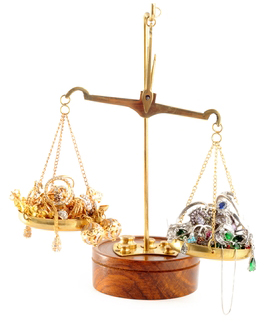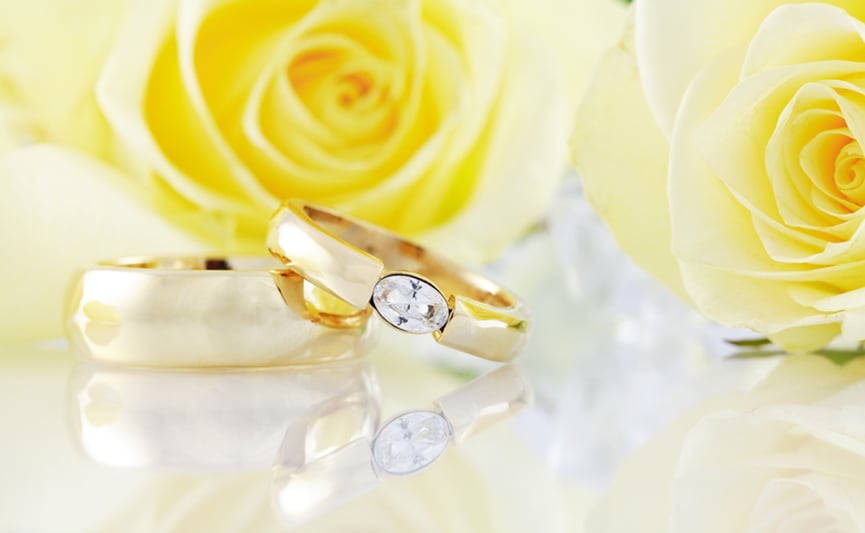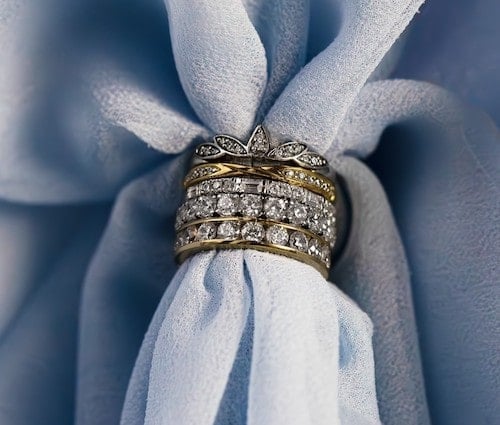'Hallmarks of Quality’ Isn’t Just An Expression – And That’s a Good Thing
As you look at the lovely diamond ring on your hand, noticing how the stone catches the light, and the gleam of the precious metal setting, have you ever taken the time to look inside the band itself? If you do you will notice a series of engravings there. These are called hallmarks and they tell you a great deal about your ring.
Diamond jewellery is an investment, and as with any investment you should know what it is that you are buying. In October we discussed the importance of diamond certificates in ensuring that the stone is what it purports to be. Understanding the hallmarks will enable you to make decisions about the precious metal with confidence.
COMPULSORY MARKS
For all fine metal jewellery produced in the UK since 1998, there are three compulsory marks. These marks tell you who made the piece, its guaranteed standard of fineness, and the Assay Office that did the testing/marking. The Sponsor’s Mark – This is the mark that indicates the company or individual who sent the piece for hallmarking. An entity must register with an assay office in order to receive an official sponsor’s mark.
The Standard Mark – This symbol indicates the purity of the precious metal used in the piece, and the amount of the precious metal contained in the alloy measured in parts per 1000. Different metals have different weight standards that are reflected in the mark.
The Assay Office Mark – Each of the four assay offices in the UK has a distinct symbol:
- London: a leopard’s head
- Edinburgh: a castle
- Birmingham: an anchor
- Sheffield: the Tudor rose
Hallmarking is a “compulsory state requirement” according to the 1973 UK Hallmarking Act. However exceptions are made for items under a certain weight – diamond stud earrings are an example of jewellery that could be small enough to be exempt. So no need to necessarily panic if you don’t find a hallmark. The International Association of Assay Offices can tell you the weight requirements per type of precious metal.

OPTIONAL MARKS
Depending on when and where your piece was made, you may see other symbols as well. Among the more common:
- Date Letters indicating the year in which it was hallmarked. Before 1998 all hallmarks included this.
- Traditional Marks indicating the type of metal.
- Commemorative Marks that commemorate special events in national history.
HOW IT’S DONE
Traditionally, hallmarks are placed on metal using a punch and hammer. This “old school” method didn’t change substantially for centuries. Today, however, many hallmarks are created using laser equipment. Because this is an etching process it does not create the distortion to the metal that the more traditional methods can.
HISTORY OF HALLMARKING
The term hallmark goes back to 1478 and refers to the requirement that goldsmiths and silversmiths send their products to Goldsmiths’ Hall in London to be marked for quality. However, the process itself dates to 1300 in the reign of Edward I when such quality assurance marks were mandated by statute. The marks were intended as protection against fraud and unfair competition; thus, it is one of the oldest forms of consumer protection. And it continues to serve.
So next time you are considering a diamond jewellery purchase, be sure to check for hallmarks to ensure that the metal comprising your band and setting are of the quality that you expect. With a purchase this big (and often important – think diamond engagement ring), peace of mind is worth its weight in gold.
Are you ready to make a sparkling investment in diamond jewellery? Contact us and we will happily guide you through the process so that you get the perfect diamond ring for you!
There are less than two weeks left to enter our #EternityProposal contest! Check out our Facebook page to see the diamond eternity ring you could win and to enter!




 How to secretly find out your partner’s ring size
How to secretly find out your partner’s ring size 10 of the Most Iconic Celebrity Engagement Rings
10 of the Most Iconic Celebrity Engagement Rings 6 of Our Favorite Celebrity Engagement Rings
6 of Our Favorite Celebrity Engagement Rings A Guide To Vintage Engagement Ring Styles
A Guide To Vintage Engagement Ring Styles